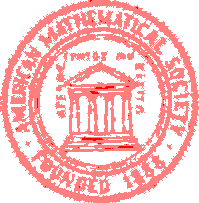Artificial intelligence and machine learning
Research Article
Applied models and problems of syllogistics
Iurii Mikhailovich Smetanin
| Udmurt State University, Izhevsk, Russia | |
 gms1234gms@rambler.ru gms1234gms@rambler.ru |
Abstract. Problems of the formation of conceptual (cognitive) thinking are closely related to applications of logic. However, they are no less closely related to philosophy. In applications, it is important not only formally, but also meaningfully to understand what is „TRUE „ and „ FALSE“ and why the logical model of causal relationships may be inadequate to reality.
It is shown that Aristotelian type syllogistics (Vasiliev N.A., Venn, Kerrol), the Bul logic algebra, can be built on a general ontological basis — Algebraic system, including the Boolean algebra of sets and volumetric relations between model sets.
In syllogistics, non-paradoxical logical following is defined.
The area of formula intepretation is discrete Venn diagrams (DDV). Universum and model sets are given as finite sets of non-negative integers.
Establishing that the logical content of the premise includes the logical content of the conclusion for any formulas boils down to verifying the inclusion of sets that are semantic meanings of the premise and conclusion. This indicates the presence of the solvability property of syllogistics. The formula can be single-sense (OS) or multi-sense (MS). The DDV family is the semantic value of the MS formula. OS Formula has one DDV as its semantic meaning. All formulas are divided into laws, doables, and contradictions.
Substantial examples confirming theoretical provisions are considered. The proposed syllogistics was tested to solve problems with a maximum number of model sets of 22. When creating software based on parallelizing the process of calculating the semantic value of a formula, you can solve problems with a significantly larger number of model sets. (In Russian).
Keywords: Applied syllogistics, discrete Venn diagrams, logical-semantic models
MSC-2020 97P99; 97U99
97P99; 97U99
For citation: Iurii M. Smetanin. Applied models and problems of syllogistics. Program Systems: Theory and Applications, 2025, 16:4, pp. 119–154. (In Russ.). https://psta.psiras.ru/2025/4_119-154.
Full text of article (PDF): https://psta.psiras.ru/read/psta2025_4_119-154.pdf.
The article was submitted 04.09.2025; approved after reviewing 18.09.2025; accepted for publication 21.09.2025; published online 12.10.2025.


